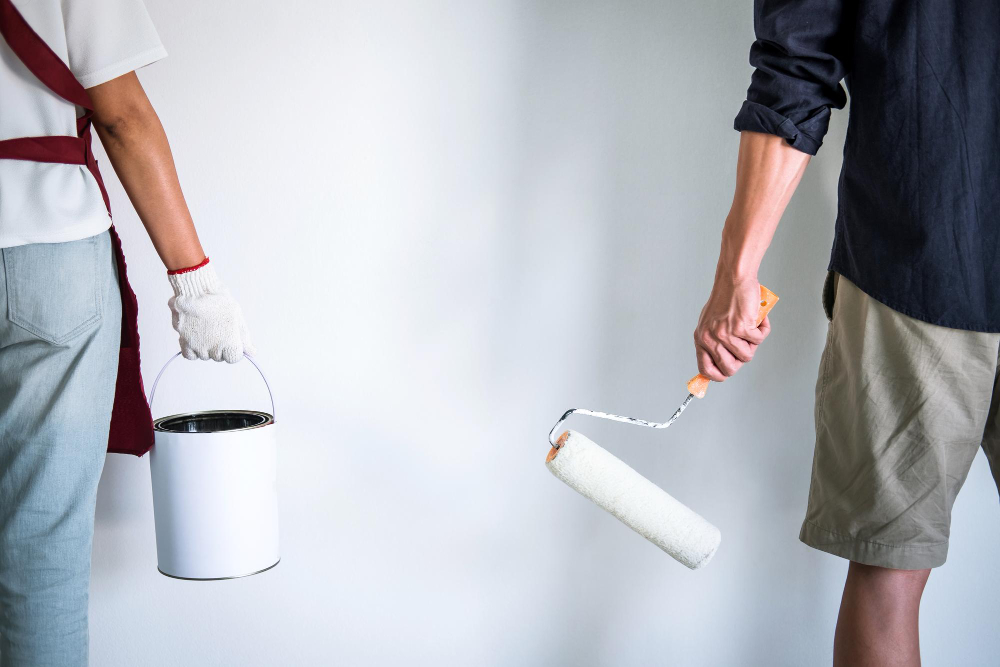The Basics of Interior Painting for Commercial Spaces

Interior painting is one of those things that can instantly elevate the look and feel of any space. When it comes to commercial painting in Ormond Beach, FL, understanding the basics ensures you get the best results, whether you're a DIY enthusiast or hiring professionals like Color Masters Painting. This blog will guide you through essential interior painting techniques, considerations for commercial spaces, and how to achieve a polished finish.
Why Interior Painting Matters for Commercial Spaces
Interior painting does more than just add color to your walls—it creates an atmosphere, builds brand identity, and contributes to the overall aesthetic value of a space. For businesses in Ormond Beach, FL, the right choice of colors and finishes can significantly influence how customers and employees perceive and experience your space.
Enhancing Brand Identity
Choosing colors that align with your brand can enhance your brand identity. For example, a technology company might prefer sleek, modern colors like blues and grays, while a wellness center might opt for soothing greens and earthy tones.
Boosting Employee Morale and Productivity
The interior environment, including wall colors, can impact your team's mood and productivity. Bright, vibrant colors can energize a space, encouraging creativity and collaboration, while cooler tones can enhance concentration and calmness.
Creating a Warm Welcome for Customers
First impressions count. A fresh coat of paint can be the difference between a space that feels inviting and one that feels neglected. Vibrant, clean walls make a good first impression, welcoming clients and making them feel more at ease.
Preparing for Your Interior Painting Project
Before you begin any painting project, preparation is key. Good preparation saves time, reduces stress, and ensures a professional finish.
1. Assess Your Space
Start by assessing the areas you plan to paint. Look for any damage, such as cracks or peeling paint, and decide if repairs are needed before starting the painting process. Take note of the types of surfaces you'll be painting—different materials require different approaches.
2. Choose the Right Paint
There are various types of paint available, each suited for specific surfaces and finishes. When selecting paint, consider:
- Finish: Matte, eggshell, satin, semi-gloss, and gloss finishes each offer unique looks and levels of durability. High-traffic areas like hallways may benefit from more durable, easy-to-clean finishes.
- Color: Choose colors that resonate with your brand and the emotional response you want to evoke in the space.
- Quality: Investing in quality paint can save you time and money in the long run. It often requires fewer coats and provides a longer-lasting finish.
3. Gather Necessary Tools
Having the right tools on hand will make your painting project more efficient:
- Brushes and rollers in various sizes
- Painter's tape for clean lines
- Drop cloths to protect floors and furniture
- Primer to create a smooth painting surface
- Ladder for reaching high areas
- Paint trays and stir sticks
Steps to a Perfect Paint Job
With your space assessed, paint chosen, and tools gathered, it's time to start painting.
1. Protect Your Workspace
Cover furniture, floors, and any fixtures that won't be painted with drop cloths or plastic sheeting. Use painter's tape to protect trim, edges, and any architectural details you want to keep paint-free.
2. Prepare Your Walls
Preparation is crucial for a smooth finish. Clean the walls to remove dust, grease, or any imperfections. Sand down rough areas and repair cracks or holes. If you're painting over a darker color or repairing extensive damage, consider applying a primer first.
3. Cut In Edges
Begin by painting the edges of your walls using an angled brush. This technique, known as "cutting in," ensures cleaner lines where the walls meet the ceiling, trim, or other boundaries.
4. Roll On Paint
Once the edges are done, use a roller to cover larger areas. Roll paint onto the wall in a "W" pattern, filling it in as you go. This method distributes paint evenly and minimizes visible strokes.
5. Apply Additional Coats
Depending on the paint's quality and the existing wall color, you may need more than one coat. Allow each coat to dry completely before applying the next to achieve a uniform finish.
6. Finish Up
Once the paint is dry, carefully remove painter's tape. Replace any fixtures, move furniture back into place, and enjoy your newly-refreshed space.
Why Hire Professional Commercial Painters?
While DIY painting can be satisfying, hiring professionals like Color Masters Painting offers several advantages:
- Expertise: Professionals have the experience to tackle any challenges that arise during the painting process, ensuring high-quality results.
- Efficiency: A professional team can complete the job faster and with less disruption to your business operations.
- Quality Assurance: With access to the best materials and techniques, professionals provide a durable, long-lasting finish.
- Time Savings: Save time by leaving the preparation, painting, and cleanup to the experts.
Conclusion
Interior painting is an effective way to transform your commercial space, enhance your brand, and create a welcoming environment for customers and employees. Whether you choose to tackle the project yourself or hire professionals, understanding the basics of interior painting will help you achieve the desired results.
For those businesses located in Ormond Beach, FL, seeking professional commercial painting services, Color Masters Painting is here to help. With our expert team, we ensure a seamless painting experience that meets your business's unique needs.
Ready to refresh your space? Contact Color Masters Painting today to get your free quote and explore how our professional services can bring your vision to life. Don't miss the opportunity to enhance your commercial space with quality interior painting that stands out.